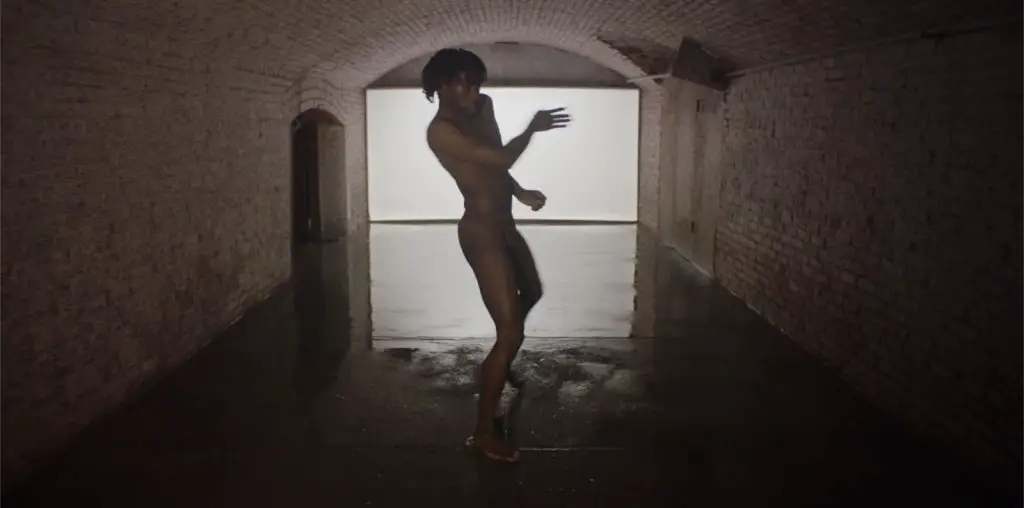
Haunted But Undaunted
The story of “Part 4” has the most modest of starting points, on the shelf in the closet of underwhelming scripts at Morgan Creek Productions. It was there while visiting the Creek offices that novelist Caleb Carr found a dismissed script for a new “Exorcist” attempt, a prequel written by William Wisher, who had written “Terminator 2” and the Sylvester Stallone legal potboiler “Judge Dredd”. Carr, who wrote the popular novel “The Alienist”, asked if he could do some work on Wisher’s story, which explored the experiences of Father Merrin and his first encounters with the netherworld during his early years in Africa.
“It was not a special-effects fest”, Carr was quoted describing. “My script was about the terrible things that people can do to each other. There was nothing magical in it, even during a final confrontation in which the devil beats up Merrin.” One compelling plot has Merrin encountering a young African boy with serious deformities who becomes possessed and undergoes physical improvements as a result, serving as an interesting counterpoint to the negative transformations young Reagan endured in the original movie. Morgan Creek was enthusiastic with Carr’s results and they brought in director Tom McLoughlin, who has extensive television and horror credits.
Caleb Carr’s version was piquing interest around town and soon Liam Neeson was signed on to star in the role of the young Father Merrin, and his clout then garnered the attention of revered director John Frankenheimer. With that news McLoughlin was forced out of the mix and the movie was given the greenlight, but during pre-production Frankheimer was hospitalized and in the summer of 2002 he died from a stroke. The protracted medical delays pushed back the production and eventually it conflicted with Neeson’s ongoing shooting schedule, and soon he departed the project. At this point the studio turned to another respected name, writer/director Paul Schrader, to step behind the camera, becoming the movie’s third director before any principal photography had been filmed.
Schrader began work on Carr’s script with little known actor Stellen Skarsgard taking over the role vacated by Neeson. Schrader chose Skarsgard because he more resembled fellow Swede Max Von Sydow, who portrayed the tormented priest in the first two installments. Schrader completed his film and presented his final cut to the executives at Morgan Creek and he was met with a more than cool reception. He says he had been told that he “…should have made a more conventional horror film.” This was the assessment from the executives who had previously approved Carr’s script. “By the time they talked about making the film scarier,” notes Schrader, “the mold had pretty well been cast,” The studio essentially had a $30 million dollar finished film that they did not want. Schrader was excused from the project, with a contractual clause forbidding him from saying anything injurious about the production. This is why the harshest comment you will hear from the deposed director is, “I think Morgan Creek thought they had made the wrong film, even before they saw my final cut.”
The next step for the studio was to shop their disappointment around town and see if they could bring in another director to shoot scenes that might augment the film and bring it closer to what they had in mind. One such meeting was had with director Renny Harlin, despite his string of infamous and expensive flops such as “The Long Kiss Goodnight” and “Cutthroat Island”. In his favor was that Morgan Creek was impressed that he had written and directed “A Nightmare on Elm Street IV: The Dream Master”. (This desire was first revealed in the original selection of McLoughlin, who directed the sixth version of “Friday the 13th”.) Harlin was somewhat interested in the assignment, but he pressed the issue, suggesting that the right thing to do was a complete re-shoot of the movie, and the studio was correct in giving him the “We’ll be in touch” brush-off. But over time they either couldn’t find or afford the right person, and eventually they returned to Harlin with the job of making an entirely new movie.
Renny took over and purged most of the original cast (save for Skarsgard, who appeared in Harlin’s Deep Blue Sea), and with new script writer Alexi Hawley crafted a new tale of the early horrors of Father Merrin. (Schrader’s version will eventually come out on DVD, either by itself or packaged with the DVD release of the theatrical film.) It did not take long for Harlin to begin to encounter his version of “the curse”. For starters, his pet dog was found with a mysterious bodily injury that required major surgery. “If you want to talk about a curse,” says the final director, “ominous things happened throughout filming and post-production.” One of those things included Harlin getting run over by a car while shooting in Rome, which kept him off the shoot for weeks while his leg was reconstructed. “There are dark powers in the world,” stated Harlin. “And these are things you can’t take lightly.” (He was not, it turns out, referring to his films like “Driven” and “The Adventures of Ford Fairlaine.”)
It’ll be tough to determine what the total outlay will have been for the studio. Given that it sports a double budget, as well as substantial marketing costs, estimates push the cost up to at least $85 million. Three directors, four writers, and two entire casts will cost you. Given the years of turmoil, the negative publicity the film has received, and the always telling move to avoid press screenings before the theatrical release, I’m betting that the real horror will remain to be seen–in the Morgan Creek accounting offices.

